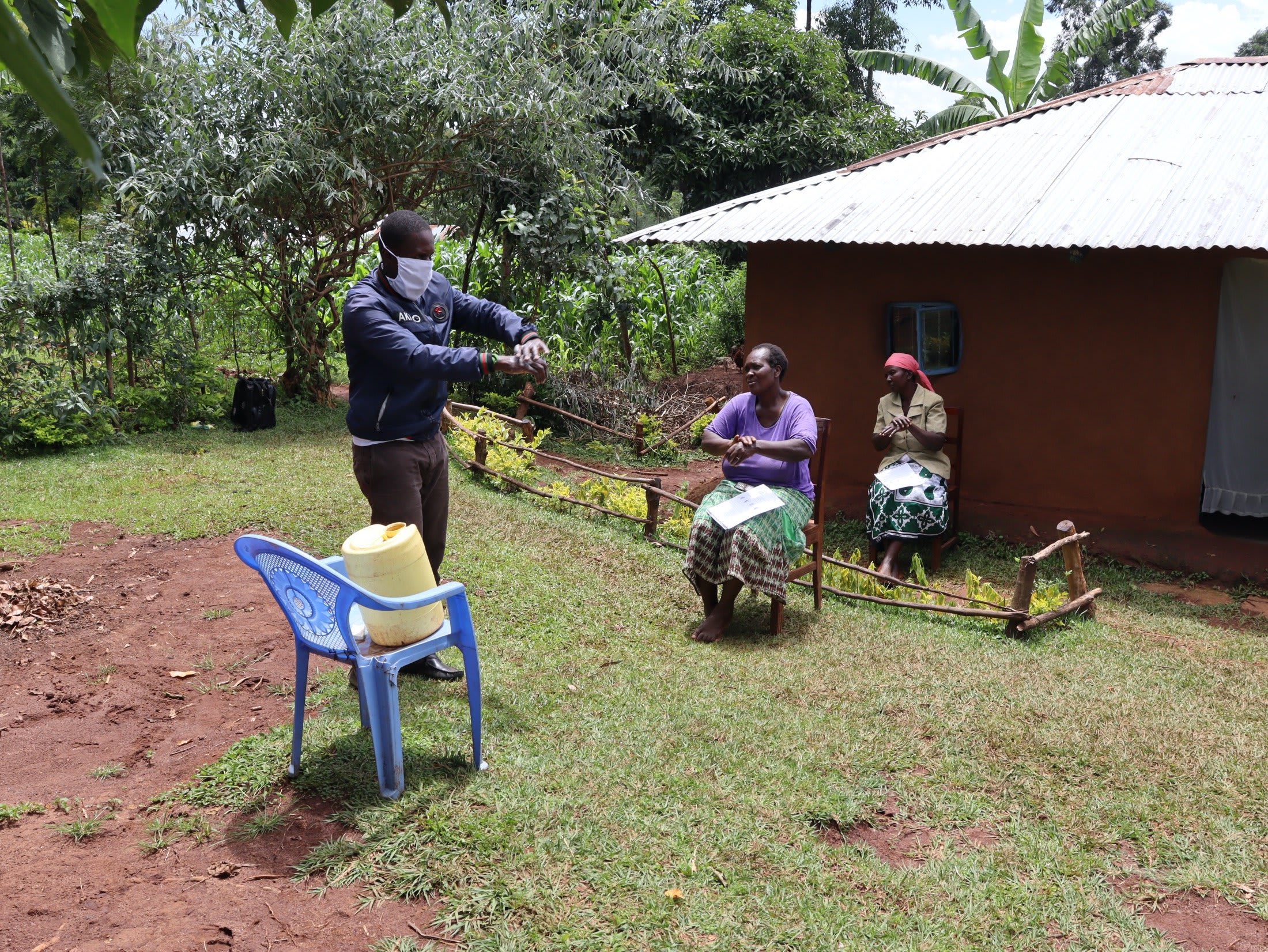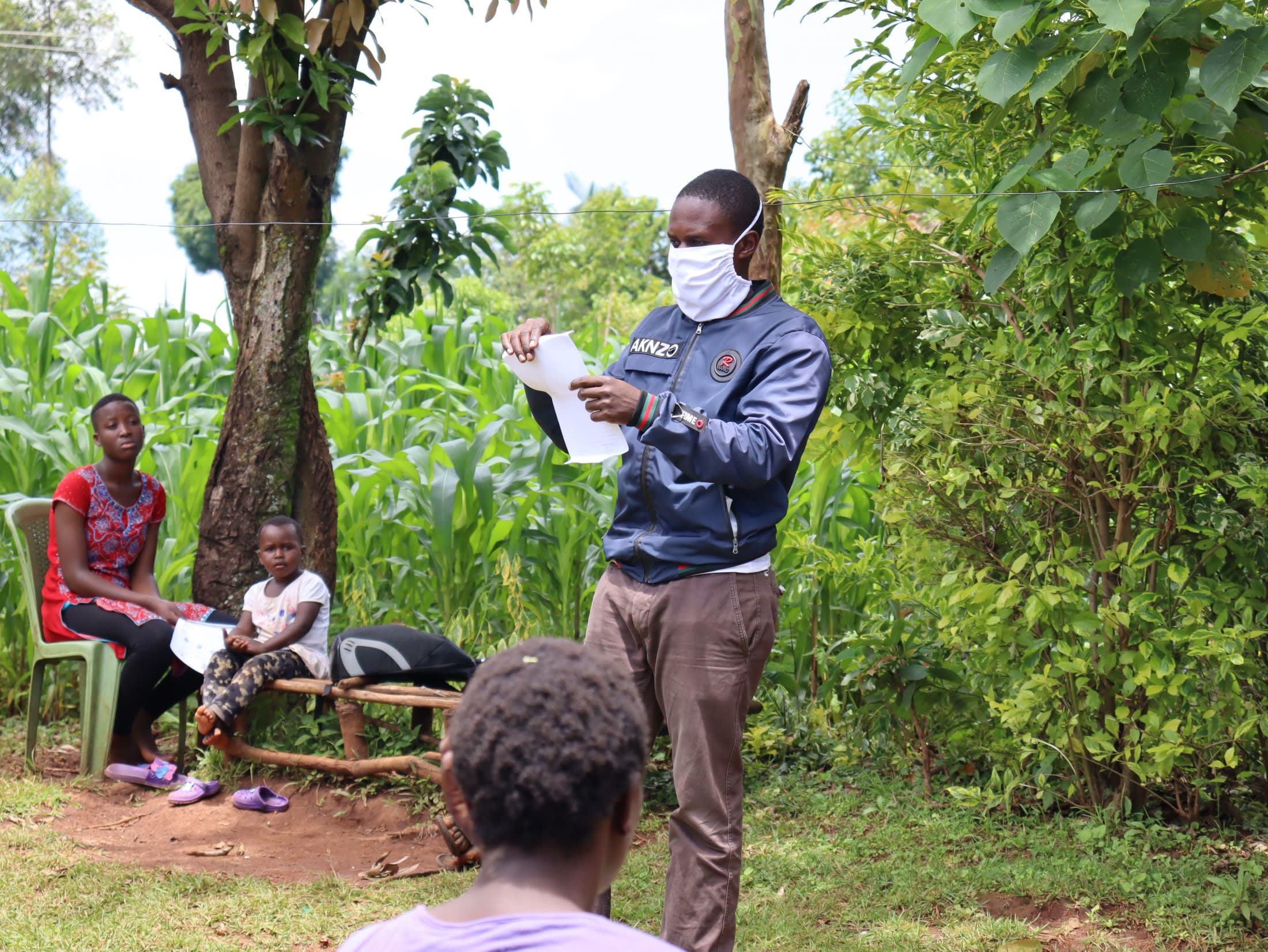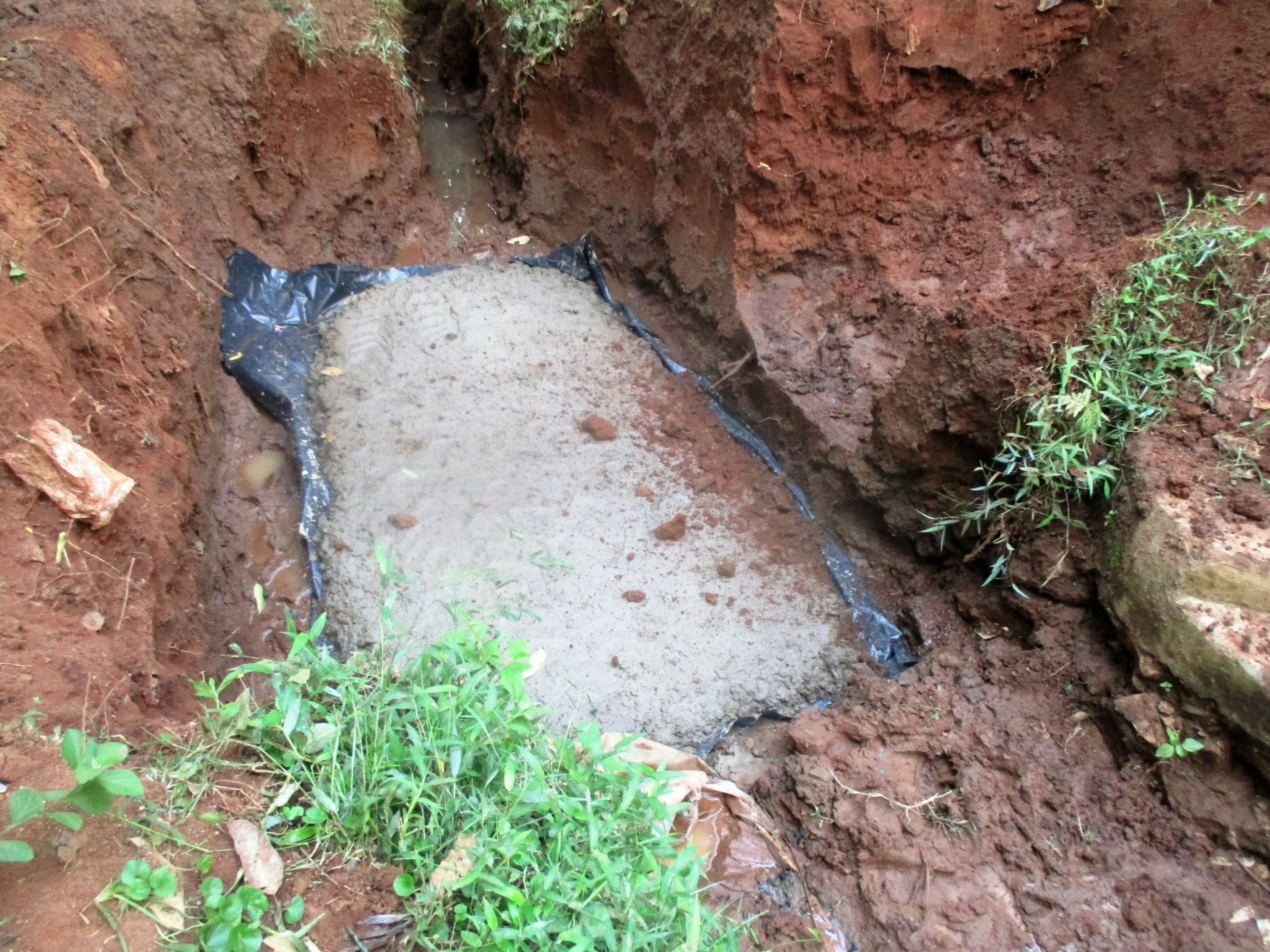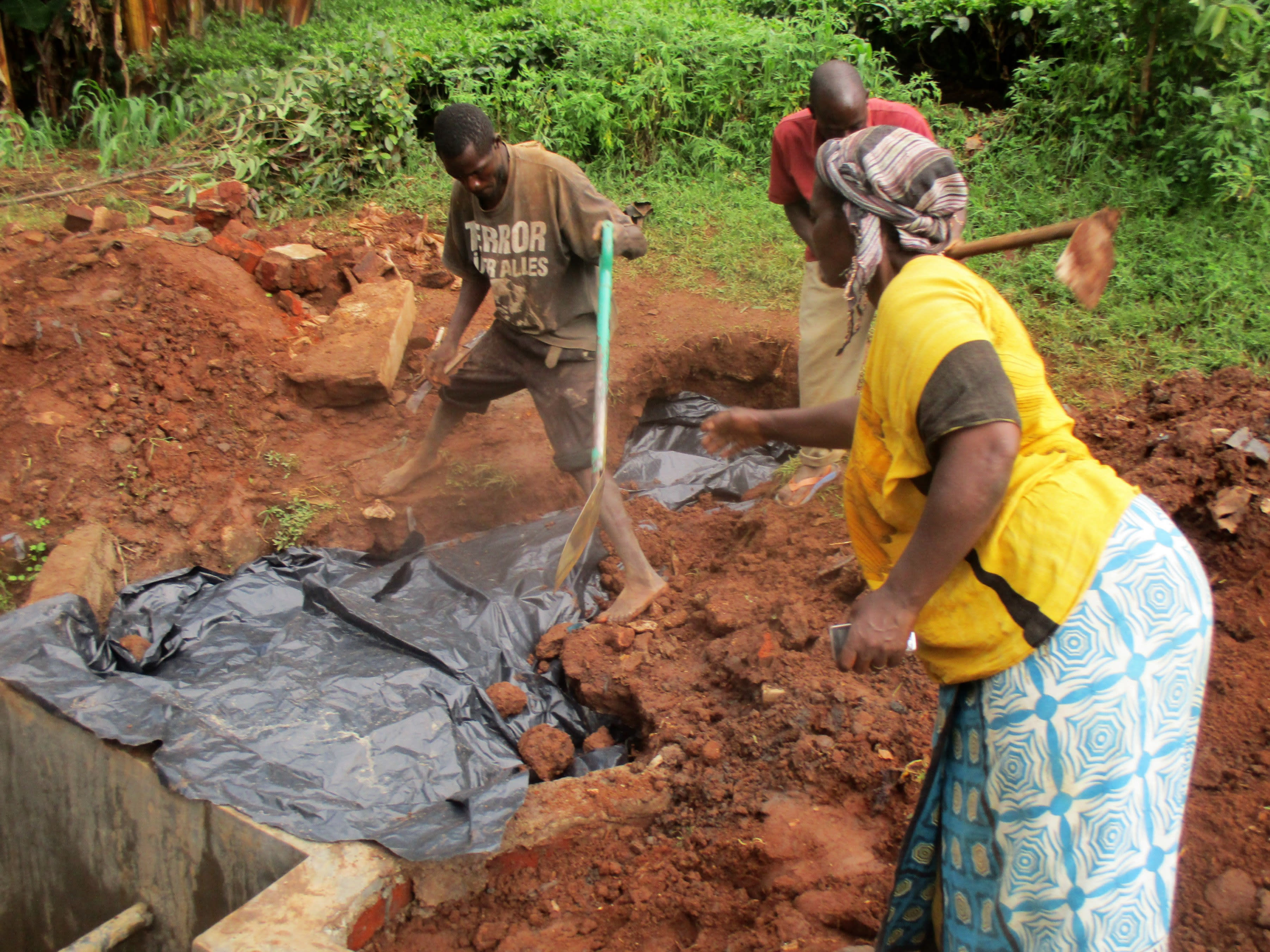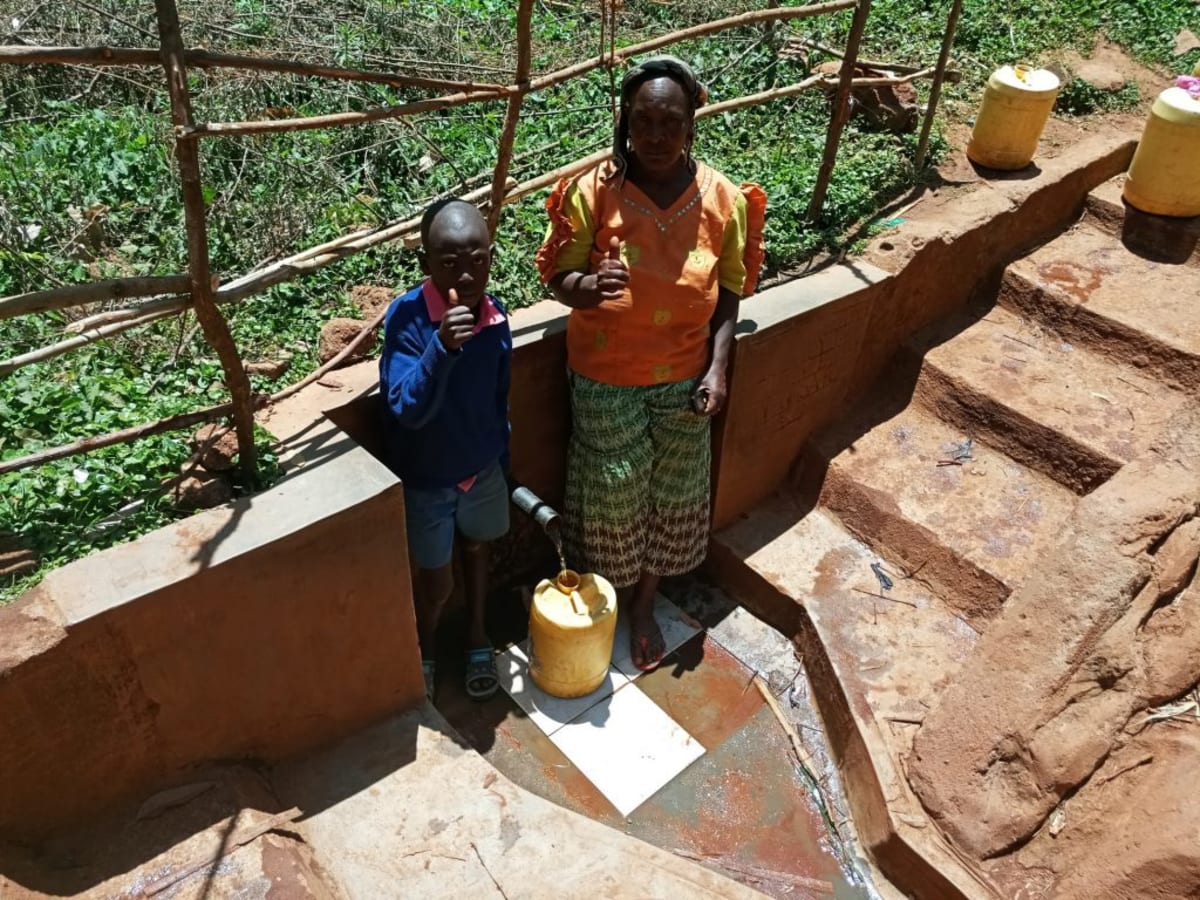Executive Summary
Mutambi community members rely on Kivumbi Spring, which has always provided water for people here. However, the water source is both a blessing and a curse to its dependents: Locals, especially children under age 5, constantly suffer from stomachaches and diarrhea.
Women and children bring their containers and dunk them until they are full. Some find bending over too strenuous, and instead step into the spring to draw its water. This activity is one of many that contaminates drinking water; waste is washed into the spring when it rains, and animals are free to come and go as they please.
Welcome to the Community
Kivumbi Spring is located in Mutambi Village where people are peasant farmers who grow maize, beans and cassava as their food crops. Tea is also planted in small patches to attract income, however little, from Mudete Tea Factory.
When people wake up each morning, their first activity is to walk to Kivumbi Spring to fetch water for the day’s needs. Some residents sell firewood - harvested from their own family woodlot; some bake bricks or hire themselves for casual labor to make ends meet. The region is adorned with beautiful, picturesque and peculiar outcrops of large igneous rocks that not only provide resting places for the villagers, but also act as ecological niches for reptiles like geckos.
The recent thing that is widely talked of is the opening up of the Simboyi-Mutambi-Hamisi Throughway that has lent a glimpse of hope to the motorcycle owners who can now earn a living in the transport industry. "We are now connected to the rest of the world," Florence Chellagat said, "unlike before when the only carpet beneath our feet was the burning red Maragoli soil that betrayed our toes with dust as the midday sun scorched us from above."
Water Situation
Kivumbi Spring is the exclusive source of water for 100 community households as well as the 300 students of Mutambi Primary School. It has well-preserved catchment areas that have kept it from drying up, despite seasons of drought that sometimes reduce other springs to dry ground. This makes it a life-giving spring for over 1,000 people. (Editor's Note: While this many people may have access on any given day, realistically a single water source can only support a population of 350-500 people. This community would be a good candidate for a second project in the future so adequate water is available. To learn more, click here.)
"During rainy season water is a lot, but the population is too high for the spring to accommodate all households and the school in its current state. Consequently, the trend has been that people line up to almost midnight and others fight due to overcrowding," said Madam Jessicah, at 60. She was caught quarreling with Ruth to give her a chance to fetch water as well, for she had waited in the line since 6 AM, but in vain.
People have suffered typhoid as a result of drinking this unprotected spring’s water - more so children whose immune systems are weak. Many people in this village have had diarrhea that can be attributed to unsafe water from the spring. The older folks are fairly resistant, but they too have to buy WaterGuard and use it when they notice that the spring’s water is outright polluted, especially during the dry season when the spring is under more pressure from so many users.
Sanitation Situation
Under half of the homes in Mutambi Village have their own pit latrines which are fashioned from logs and have no doors. The wooden floors become worn out, making them unsafe to use. These pit latrines are very difficult to keep clean, attracting flies which spread diseases.
Rubbish is either disposed of in the garden or behind the homes where chickens scramble for it. Only 25 – 50% of the homesteads have clothesline and dish racks.
Plans: Hygiene and Sanitation Training
At least 15 community members and health workers will attend hygiene and sanitation training for two days where a water user committee will be established to oversee all operations around this spring. The facilitator plans to use PHAST (Participatory Hygiene and Sanitation Transformation), CLTS (Community-Led Total Sanitation), ABCD (Asset-Based Community Development), group discussions, handouts, and demonstrations at the spring.
Plans: Sanitation Platforms
On the second day of training, participants will select five families - who suffer most from a shortage of sanitation facilities - to benefit from new latrines.
Training will also inform the community and selected families as to what they need to contribute to make this project a success. They must mobilize locally available materials, such as bricks, clean sand, hardcore, and ballast. The five families must prepare by sinking a pit for the sanitation platforms to be placed over. All community members must work together to make sure that accommodations and food are provided for the work teams.
Plans: Spring Protection
This water is not safe for human consumption, yet these people cannot afford to protect the spring by themselves. They are willing and ready to work with the organization to help them protect their water point. Users of this spring are ready to garner all materials required from their side for the protection of this source.
Protecting a spring often results in a stronger flow of water from it. So, protecting Kivumbi Spring will alleviate overcrowding and long lines and ensure that the water is safe, adequate and secure. Construction will keep surface runoff and other contaminants out of the water. So, the community of Mutambi will be healthier, happier and able to spend more of their time and energy in school, at work and taking care of their families.

 Protected Spring
Protected Spring
 Rehabilitation Project
Rehabilitation Project











